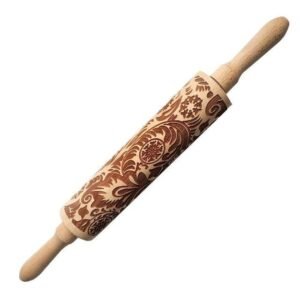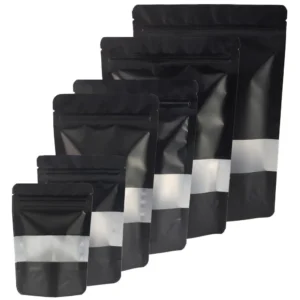Introduction
From the gentle slopes of Colombia to the bustling cafés of Paris, coffees, including espresso and caffè, command a central place in global culture and cuisine. Revered for its energizing effect and rich, robust flavor, coffee is more than a beverage; it’s a worldwide phenomenon.

The Global Love for Coffee
In every corner of the world, coffees bring people together, defining daily routines, energizing mornings, and fostering conversations. Whether it’s a strong espresso or a delicious caffè, these beverages have a way of connecting individuals and creating memorable experiences. Whether it’s the espresso zeal of Italy or the coffeehouse culture of Vienna, coffees transcend borders, making them the world’s most beloved beverages. Drinking coffees is a popular practice in many countries.
- Cultural Significance: Across countries, coffees symbolize hospitality, community, tradition, and espresso beverage.
- Social Connector: From business meetings to friendly gatherings, coffee often plays host, present in various social settings.
- Economic Impact: As a key commodity, coffee supports millions globally, from cultivation to cafés.
| Fact | Detail |
|---|---|
| Global Consumption | Over 2.25 billion cups of coffee are consumed in the world every day. |
| Leading Producers | Brazil, Vietnam, and Colombia are among the top coffee-producing countries. |
| Cultural Events | Many regions celebrate coffee through festivals and national observances, like International Coffee Day. |
This universal appeal of coffee stems not only from its sensory allure but also from its ability to adapt to different cultural palates, making it a staple in diverse rituals and cuisines.
History of Coffee: A Journey Through Time
The story of coffee is steeped in rich, aromatic folklore, and transformative journeys. It’s a tale that commences in ancient times and traverses many continents, cultures, and historical events. The coffee bean has not only energized generations but also witnessed the evolution of our global landscape.

The Mystical Origins of Coffee
Legend whispers of an Ethiopian goat herder named Kaldi, who noticed his goats frolicking with unusual fervor after nibbling on some mysterious red berries from coffee plants. These berries are actually green coffee beans, which are the seeds of the coffee plants. Kaldi’s goats were likely energized by the robusta coffee beans they consumed. Curiosity led him to sample these berries, experiencing a similar surge of energy. This serendipitous discovery of coffee beans would ripple through time and space, altering history forever.
- Discovery: The energizing effect of the coffee plant was likely first recognized in the region of modern-day Ethiopia.
- Cultural Integration: Initially, coffee found its place in various rituals and medicinal practices.
| Historical Aspect | Description |
|---|---|
| Initial Use | Coffee beans were originally consumed for their stimulant properties, often as part of religious ceremonies. |
| Geographical Roots | Ethiopia is widely acknowledged as the birthplace of the coffee plant, Coffea arabica. |
Coffee’s Global Voyage
From its humble beginnings, coffee embarked on a global voyage, reaching countries such as the Arabian Peninsula and eventually captivating the entire Islamic Empire through its unique method. By the 15th century, coffee had established itself as a cornerstone of daily life in various Middle Eastern countries.

- Spread to Arabia: The cultivation and trade of coffee began in earnest in Yemen, eventually spreading throughout the Arabian Peninsula.
- Coffeehouses: These social hubs began appearing in cities across the Middle East and other countries, becoming places of intellectual exchange and social interaction.
| Region | Contribution |
|---|---|
| Middle East | The region was instrumental in the initial cultivation, consumption, and cultural integration of coffee. |
| Europe | Coffee arrived in Europe in the 17th century, transforming social habits and spurring the proliferation of coffeehouses. |
| Americas | The fertile soils of Central and South America eventually nurtured vast coffee plantations, significantly impacting local economies and global trade. |
The journey of coffee is a testament to human curiosity, adaptability, and the desire for shared experiences. From ancient Ethiopian highlands to modern café culture worldwide, coffee continues to brew bonds between people, transcending geographical, cultural, and social barriers.
From Seed to Cup: The Fascinating Journey of Coffee Beans, Grading, and Roastingprovide
The journey of coffee beans, from seed to cup, is a fascinating process that involves several stages, including grading and roasting. Let’s take a closer look at each step:
- Seedling Stage: Coffee beans start their journey as seeds that are planted in nurseries. They are carefully nurtured until they grow into seedlings ready for transplantation.
- Plantation Stage: The seedlings are then transplanted to coffee plantations, where they are grown under specific conditions. This stage requires regular maintenance, including watering, pruning, and protection from pests.
- Harvesting: Once the coffee cherries ripen, they are hand-picked or mechanically harvested. This step requires precision to ensure only the ripe cherries are collected.
- Processing: After harvesting, the coffee cherries undergo processing to remove the outer layers and extract the coffee beans. There are two main methods: the dry process (natural) and the wet process (washed).
- Grading: Coffee beans are then graded based on their size, shape, and quality. This step helps determine their value and potential uses.
- Roasting: The final step in the journey is roasting. Coffee beans are carefully roasted at specific temperatures to bring out their unique flavors and aromas.
- Seedlings are nurtured in nurseries before being transplanted to coffee plantations.
- Coffee cherries are hand-picked or mechanically harvested.
- Coffee beans can be processed using the dry or wet method.
- Grading helps determine the quality and value of coffee beans.
- Roasting is a crucial step to unlock the flavors and aromas of coffee beans.
Unveiling the Diversity of Coffee Beans
In the realm of coffee, diversity thrives. The beans, bearing the soul of your brew, come in varieties, each with unique characteristics and stories. Understanding these differences is essential for any coffee connoisseur, as the type of bean dictates the flavor, strength, and quality of the coffee.
The Main Varieties of Coffee Beans
The world of coffee beans is not limited to a single type but is a universe of varied species and origins. However, among these, two types stand out due to their widespread cultivation and consumption: Arabica and Robusta.
- Arabica (Coffea arabica): Known for its sweet, soft taste, Arabica beans tend to have higher acidity and more profound flavor profiles, often containing hints of sugar, fruit, and berries.
- Robusta (Coffea canephora): These beans are bold, with a stronger, more bitter flavor, containing twice the caffeine of Arabica varieties.
Other less common types include Liberica and Excelsa, offering a range of flavors and aromas, contributing to the tapestry of coffee tastes.
| Bean Type | Global Production |
|---|---|
| Arabica | Approximately 60-70% of the world’s coffee production |
| Robusta | Roughly 30-40% of global production |
Delving into Flavor Profiles
The journey from bean to cup is complex, with each type of coffee bean offering a distinct flavor profile, influenced by its growing conditions, processing, and brewing.
- Arabica’s Flavor Palette: Often smoother and slightly acidic, these beans can exhibit notes of chocolate, nuts, and caramel. The high elevation and cooler climate of their growth regions contribute to these nuanced flavors.
- Robusta’s Boldness: Typically stronger and more bitter, Robusta beans may express a nutty, earthy, or woody essence. Their resilience in various climates and resistance to pests make them widespread, especially in regions with warmer climates.
| Bean Type | Typical Flavors |
|---|---|
| Arabica | Chocolate, nuts, caramel, fruity notes |
| Robusta | Earthy, woody, stronger bitterness |
Understanding these beans is akin to deciphering the soul of your coffee cup. It’s a peek into the journey that begins in distant fields and ends as the enchanting brew that millions cherish daily. Whether you prefer the delicate complexities of Arabica or the straightforward punch of Robusta, the world of coffee beans is rich and inviting, promising a universe of experiences in each cup.
Mastering the Art of Coffee Brewing
Brewing coffee is an art form, a ritual that turns a handful of roasted beans into a symphony of flavors in a cup. The techniques vary, each unveiling unique notes and aromas, offering myriad ways to enjoy this timeless beverage.
Popular Coffee Brewing Methods
The world of coffee brewing is diverse, with techniques ranging from the quick and straightforward to the intricate and ritualistic. Each method extracts different flavor compounds, affecting the strength, flavor, and texture of the brew.
- French Press: This classic method uses immersion brewing, allowing coarse-ground beans to steep fully in hot water, extracting a rich and robust flavor.
- Espresso: High pressure pushes hot water through fine grounds, creating a concentrated, bold shot of coffee with a signature crema on top.
- Pour-Over: A more hands-on approach where hot water is poured in a slow, steady stream over a filter containing ground coffee, enhancing clarity and complexity of flavors.
| Method | Brew Time | Flavor Profile |
|---|---|---|
| French Press | 4 minutes | Full-bodied, robust |
| Espresso | 25-30 seconds | Strong, concentrated |
| Pour-Over | 2-3 minutes | Clean, nuanced |
The Impact of Brewing on Taste
The way coffee is brewed not only affects the final cup but also the sensory journey it offers. Different brewing methods highlight various aspects of the coffee’s flavor, from its natural acidity and sweetness to its full-bodied richness.
- Extraction: The balance of water, temperature, and brew time affects how much flavor is extracted from the beans, influencing acidity, bitterness, and sweetness.
- Texture: Methods like espresso or Aeropress produce a richer, creamier body, while pour-overs and drip methods offer a cleaner, crisper mouthfeel.
- Flavor Notes: Certain brewing techniques can enhance subtle flavor notes in the coffee, from fruity brightness to deep, earthy undertones.
| Factor | Effect | Brewing Examples |
|---|---|---|
| Water Temperature | Hotter water extracts more quickly, potentially leading to bitterness | French Press, Espresso |
| Grind Size | Coarser grinds offer slower extraction, highlighting sweetness | Cold Brew, French Press |
| Brew Time | Longer contact with water can extract undesirable compounds | Espresso (short), Pour-Over (variable) |
In the realm of coffee, the journey from bean to cup is a transformative one. Each brewing method tells a different story, often reflecting cultural preferences and lifestyles. Whether you savor the ritual of manual brewing or prefer the convenience of modern machines, the art of coffee brewing is a nuanced dance of time, temperature, and technique, all converging to create the perfect sip.
Exploring the Health Aspects of Coffee
Coffee, a staple in many daily routines, is more than a mere wake-up call. It’s a complex beverage brimming with compounds that interact with the body in diverse ways. While often praised for its invigorating character, coffee also enters discussions about health, with research shining a light on its potential benefits and considerations.
Potential Health Benefits of Coffee
Delving into the realm of coffee and health, scientific studies have brewed intriguing findings. A cup of coffee goes beyond caffeine – it contains antioxidants, essential nutrients, and bioactive compounds.
- Antioxidants: Coffee is rich in powerful antioxidants like chlorogenic acid and cafestol, which combat oxidative stress and inflammation.
- Brain Health: Regular coffee consumption is associated with a reduced risk of neurodegenerative diseases, including Alzheimer’s and Parkinson’s.
- Physical Performance: The caffeine in coffee can enhance physical performance by increasing adrenaline levels and breaking down body fat.
| Benefit | Description | Research Insight |
|---|---|---|
| Longevity | Associated with a longer life span | Studies suggest that coffee drinkers have a lower risk of premature death. |
| Heart Health | Potential to support heart health | Moderate consumption is linked to a reduced risk of heart failure. |
Mindful Coffee Consumption
While coffee can be a healthful addition to the diet, it’s not a one-size-fits-all beverage. Individual responses can vary, and there are considerations to ensure a healthy coffee drinking habit.
- Caffeine Sensitivity: Some individuals may be sensitive to caffeine, experiencing restlessness or disrupted sleep patterns.
- Pregnancy: Expecting mothers are often advised to limit their coffee intake due to caffeine’s potential effects on the fetus.
- Bone Health: Excessive coffee consumption can lead to decreased calcium absorption, impacting bone health.
| Consideration | Impact | Recommendation |
|---|---|---|
| Daily Limit | High intake may lead to health issues | Health experts suggest limiting consumption to 3-4 cups. |
| Additives | Sugar and creamers add extra calories | Opt for black coffee or use healthy sweeteners. |
In the world of coffee, balance is key. Enjoying the beverage’s benefits while being mindful of individual limits and responses ensures that coffee remains a cherished, healthful indulgence.
Immersing in the Global Coffee Culture
Coffee transcends mere taste and aroma to become a cultural phenomenon, a universal language of hospitality, comfort, and community. Across continents, coffee molds itself to fit local customs, creating a tapestry of traditions that resonate with the identity of each society.
Coffee’s Cultural Kaleidoscope
From the Ethiopian coffee ceremony to the meticulous Japanese pour-over, coffee adapts to the heartbeat of diverse cultures. Each region brews its unique signature into their coffee, making it a reflection of its people.
- Italian Espresso: A symbol of Italian lifestyle and leisure, representing a break from the hustle, a moment of contemplation or conversation.
- Turkish Coffee: More than a drink, it’s a part of wedding customs, a symbol of friendship, and a tool for fortune-telling in Turkey.
| Culture | Coffee Tradition |
|---|---|
| Vietnamese | Known for their egg coffee, a creamy concoction that offers a unique twist on the beverage. |
| Australian | Inventors of the flat white, a testament to their love for artisanal coffee. |
Social Dynamics of Coffee Consumption
Coffee is the silent witness to an unspoken social contract, fostering connections and grounding relationships in its communal nature. The coffee culture nurtures a sense of belonging, creating spaces for dialogue, debate, and relaxation.
- Coffeehouses: From the intellectual hubs in the Middle East to the artistic coffee shops in the West, these are spaces for socialization, intellectual exchange, and artistic expression.
- Community and Coffee: Local coffee shops often support community events, becoming integral to local development and solidarity movements.
| Social Aspect | Description |
|---|---|
| Business Meetings | Coffee breaks down formal barriers, providing a relaxed atmosphere for discussions. |
| Creative Spaces | Many writers and artists find inspiration in the ambient buzz of a coffee shop. |
The culture of coffee drinking is a nuanced depiction of society’s social fabric. It’s a ritual that comforts the solitary drinker, energizes the hard worker, and enlivens conversations among friends. In its warmth, people find familiarity, a home away from home.
The Art of Coffee Tasting: A Symphony of Flavors
Embarking on a journey through the world of coffee tasting is akin to attending a concert, where each note plays a critical role in the symphony of flavors. This art form, practiced by professionals and enthusiasts alike, unveils the rich tapestry of sensory experiences that each cup of coffee holds.
Professional Techniques in Coffee Tasting
In the realm of professional coffee tasting, often referred to as ‘cupping,’ experts meticulously analyze every aspect of the coffee’s character. This ritual is not merely about sipping and savoring; it’s a holistic assessment of the bean’s journey from field to cup.
- Sensory Analysis: Professionals rely on all senses to assess the coffee’s quality, from observing the color to smelling the aroma and tasting the brew.
- Flavor Profiling: Through careful tasting, experts identify various flavor notes, from fruity brightness to deep, earthy undertones, categorizing the coffee accordingly.
| Technique | Purpose |
|---|---|
| Fragrance Evaluation | Assessing the coffee grounds’ aroma to determine freshness and quality. |
| Slurping | Aerating the coffee across the palate to enhance flavor detection. |
Decoding the Language of Coffee
Describing coffee transcends generic terms like ‘strong’ or ‘bitter.’ The vocabulary is as rich and complex as the brew itself, allowing tasters to articulate the multitude of sensations experienced with each sip.
- Acidity: Not to be mistaken for sourness, acidity refers to a sharp, vibrant quality, often desired in coffee.
- Body: This term describes the coffee’s weight or thickness on the palate, ranging from light to full-bodied.
- Finish: The aftertaste that lingers post-sip, which can range from sweet and smooth to resinous.
| Term | Sensation |
|---|---|
| Bright | A positive form of acidity that adds a lively, sparkling quality. |
| Buttery | Describes a coffee that has a creamy, smooth body. |
The art of coffee tasting is a journey of continuous discovery, an education in recognizing and appreciating the myriad subtleties that define each unique brew. It’s a dialogue between the taster and the bean, a narrative that unfolds with every nuanced sip.
Embracing Sustainability in Coffee Production
In the world of coffee, sustainability is a pressing concern. As we relish each cup, it’s vital to acknowledge the environmental footprint and the human effort that brings this cherished beverage to our tables. Sustainable practices in coffee production are not just ethical choices but necessary steps for the future of this global industry.
The Environmental Echo of Coffee
The cultivation of coffee has significant environmental implications. Traditional practices often lead to deforestation, soil degradation, and water contamination. However, a shift is underway, with more growers adopting sustainable farming methods.
- Shade-Grown Coffee: This practice involves growing coffee plants under the canopy of trees, preserving natural habitats and increasing biodiversity.
- Organic Cultivation: Utilizing natural processes for pest control and fertilization, avoiding harmful chemicals that contaminate the ecosystem.
| Practice | Environmental Benefit |
|---|---|
| Water Conservation | Efficient water use and wastewater management in coffee processing. |
| Carbon Footprint Reduction | Minimizing energy consumption and greenhouse gas emissions in production. |
Fair Trade and Direct Trade: Beyond the Label
In the realm of sustainable coffee, Fair Trade and direct trade certifications are more than badges on a package; they’re assurances of social responsibility.
- Fair Trade: This global movement advocates for better working conditions and fair pricing for farmers, ensuring they earn sustainable incomes.
- Direct Trade: Roasters build direct relationships with growers, promising fair compensation, and often investing in community development.
| Certification | Impact |
|---|---|
| Fair Trade | Empowers small-scale farmers through fair prices, community development, and environmental stewardship. |
| Direct Trade | Encourages direct communication and price negotiations between farmers and buyers, enhancing transparency and accountability. |
Sustainable practices in coffee production are brewing a brighter future for everyone involved, from the farmers tending the crops to the consumers savoring each cup. By supporting these initiatives, we contribute to a more ethical and sustainable world, ensuring the longevity of the coffee culture we cherish.
Innovations in Coffee: Brewing Future Trends
The world of coffee is ever-evolving, driven by continuous innovations that redefine our brewing methods and consumption habits. These advancements are not just trends; they are responses to the global consumer’s shifting tastes and the industry’s technological progress.
New Waves in Coffee Consumption
The coffee industry is buzzing with new trends, catering to a modern audience that craves variety and novelty.
- Cold Brew: Steeped for hours in cold water, cold brew coffee offers a smoother, less acidic taste, appealing to the contemporary palate.
- Nitro Coffee: Infused with nitrogen, this brew tantalizes taste buds with its creamy texture and a cascading effect reminiscent of draft beer.
Technological Brew-volution
Technology is revolutionizing coffee brewing, enhancing precision and convenience in the art of coffee making.
- Smart Coffee Makers: From scheduling brew times to customizing coffee strength, smart brewers connect to your devices, personalizing your coffee experience.
- Precision Brewing: Advanced machines now replicate the pour-over technique, automating the blooming phase for optimal flavor extraction.
In the dynamic landscape of coffee, these innovations are brewing a future where tradition and technology converge, crafting experiences that resonate with evolving consumer preferences and lifestyles.
Coffee and Its Community Impact: Beyond the Brew
Coffee does more than energize individuals; it powers communities. From the local economies of coffee-producing regions to the social dynamics in urban coffeehouses, coffee cultivates connections, shapes economies, and fosters community spirit.
Brewing Prosperity in Local Communities
The coffee industry significantly influences the communities where coffee is grown. It’s a catalyst for local development, providing livelihoods, shaping social structures, and, in many cases, initiating critical sustainability efforts.
- Economic Backbone: For numerous communities, especially in developing countries, coffee production is the primary source of income, funding schools, healthcare, and infrastructure.
- Social Change: Many coffee cooperatives champion social causes, from women’s empowerment to education programs, leveraging coffee commerce for community betterment.
Coffee Shops: Grounds for Community Building
Beyond serving a robust cup, coffee shops function as community hubs, fostering a culture of inclusivity, creativity, and collaboration.
- Social Catalyst: These spaces host a medley of events – poetry readings, music nights, and art displays – celebrating local talent and facilitating cultural exchange.
- Networking Nooks: For freelancers, entrepreneurs, and students, coffee shops provide a communal setting for work, meetings, and study, often sparking collaborations and innovations.
In essence, coffee brews more than a beverage; it stimulates social interaction and communal growth. From the fields where it’s harvested to the cozy corner coffee shop, it nurtures a sense of togetherness, making our global village a smaller, friendlier place.
Conclusion
In conclusion, coffee is a universe of its own, brimming with diverse cultures, innovations, and stories. From its humble bean beginnings to its global cultural staple status, coffee continues to fascinate and inspire. We’re all invited to this ongoing exploration—each cup offering a new chapter, a fresh perspective. So, let’s keep brewing, tasting, and discovering, for the world of coffee knows no bounds.
FAQs
What is coffee made from?
Coffee is made from roasted coffee beans, the seeds of berries from certain Coffea species native to tropical Africa and Asia.
What are the 4 types of coffee?
1. Arabica: High quality, mild flavor
2. Robusta: Stronger, more bitter
3. Liberica: Unique flavor, less common
4. Excelsa: Distinctive taste, used in blends
What is the disadvantage of coffee?
Excessive coffee consumption can cause insomnia, nervousness, restlessness, increased heart rate, upset stomach, and muscle tremors.
Who should not drink coffee?
People sensitive to caffeine, those with certain medical conditions, pregnant individuals, and those prone to anxiety or insomnia should avoid coffee.
When should I drink coffee?
Best to enjoy coffee during mid-morning or early afternoon to harness its benefits without disrupting sleep patterns.
Is milk coffee good for health?
Milk coffee, when consumed in moderation, provides calcium and protein but should be balanced due to added calories and potential sugar.
Which coffee type is best?
Arabica is often preferred for its smooth, mild flavor and aromatic properties, but personal taste preferences determine the “best” type.
Why do people drink coffee?
People drink coffee for its stimulating effect, rich taste, and social enjoyment. It’s also integral to many cultural rituals worldwide.
Frequently Linked pages
1. Nespresso pods – The Ultimate Guide to Nespresso Pods: Exploring Flavors, Intensities, and More












